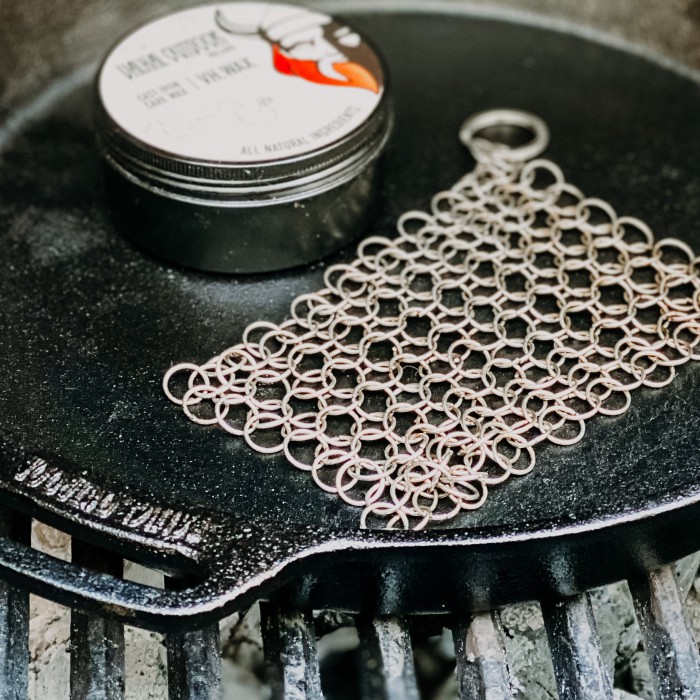Seasoning a cast iron pan

What is the seasoning of cast iron?
A cast iron pan does not have a non-stick coating, but something much better. A cast iron pan develops a patina through use. When your pan is properly seasoned and the patina is optimal, it has the same qualities as a non-stick coating without the disadvantages of a non-stick coating.
When you season cast iron the aim is to reach the smoking point of the oil in high temperature. When the oil starts to smoke, the so-called polymerisation process is triggered. This means that the oil starts to bind to the porous surface of the cast iron, hardens during cooling and this allows it to act as a non-stick coating.
Step-by-step plan for seasoning your cast-iron pan
- Coat completely (inside and outside) with the VH.WAX or a natural oil. Make sure it is an even thin layer. This is easiest with a sponge or an old cloth/t-shirt.
- Place upside down in a 200-degree preheated oven or barbecue for about 1 hour. You can put something underneath to catch any drips, aluminium foil for example.
- Let cool completely
- Repeat steps 1-3 several times. We recommend at least 3x.
- When the layers are applied properly, your pan will have an even dark brown to black colour. Apply another thin layer of VH.WAX or natural oil before storing.
Tip: The VH.WAX is specially formulated for the care and seasoning of cast iron. Should you still opt for a natural oil, choose one with a high smoke point.
Seasoning on a fire or cooker
How should you season cast iron if you don't have an oven or barbecue? You can also season cast iron on an open fire, such as a campfire, or on your cooker.
- Coat completely (inside and outside) with VH.WAX or a natural oil. Make sure it is an even thin layer. This is easiest with a sponge or an old cloth/t-shirt.
- Now put the cast iron on high heat and let it get just as hot until the layer of wax or oil starts to smoke. Leave the pan on the fire for a while longer until most of the drippings have dissolved.
- Let the pan cool down completely. With a cloth, remove any last drops of oil, this should not be much.
- Repeat steps 1-3 several times. We recommend at least 3 times.
- When the layers have been applied properly, your pan will have an even dark brown to black colour. Apply another thin coat of VH.WAX before storing.
Tip: Step 2 in particular can release quite a lot of smoke. If you have the opportunity, we recommend doing this outside. Do you decide to do it inside? Make sure there is sufficient ventilation.
Rust?
In case your cast-iron pan or accessory has a rust spot, there is no need to panic. The nice thing about a cast iron pan is that you can make it like new again by seasoning it. Follow the steps below and you can soon get back to working with your Dutch Oven or skillet.
- Remove all rust with a sturdy sponge or brush until you can see the bare cast iron again.
- Clean your entire pan or accessory well with a mild detergent and then dry it well.
- Now follow all the steps for seasoning cast iron.

